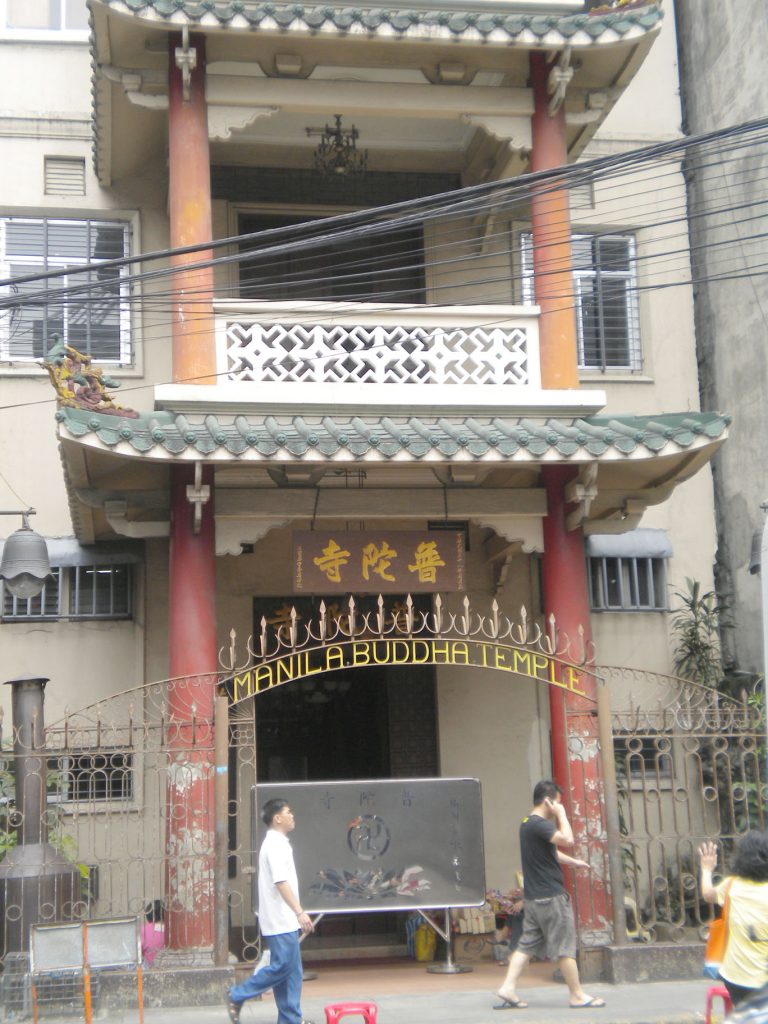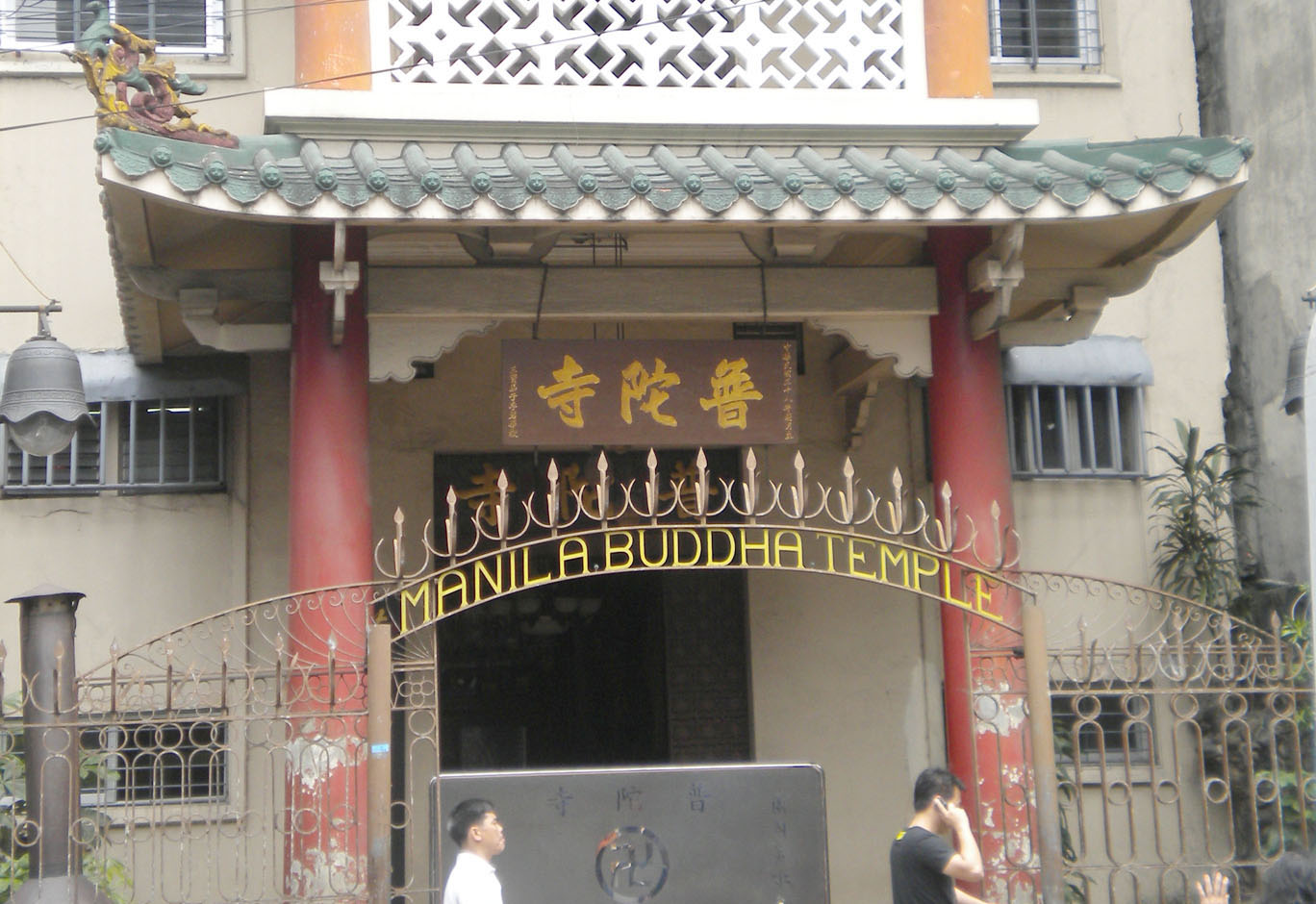Editors Note: This is the 14th of a series about the 36 Chinese Buddhist temples of the Philippines. Much of the information is from a thesis of Venerable Chuanmiao (Hsuan Chuang University, 2008), a Buddhist monk affiliated with the Thousand Buddha Temple in Quezon City.
14. Manila Buddha Temple 普陀寺
1155 Masangkay Street, Sta. Cruz, Manila
Tel.: 8254-7901 • 8254-8645
Ruman (如滿), its founder, first came to Manila in 1939, invited by Xingyuan (性願) – the first monk to come to the Philippines – to assist at Seng Guan Temple.
While there, he compiled a Dharma service or liturgy for chanting the name of Amitabha Buddha (念佛儀規) that is still in use today at most of the temples in the Philippines.
In 1948, he decided to rent his own place on Alonzo St. and named it Buddha Temple (普陀寺). He also invited his Dharma brother, Ruyi (如意), to come from China and assist him.
The temple’s present site was bought in 1951 and construction completed in 1958. Ruman was abbot and in 1969, also built Baguio Buddha Temple. Ruyi became abbot there. Both monks died in 1983.
The temple’s board of directors arranged for a succession of monks to take charge of both temples. Xinli (心理) served 1984-1991, Tiwen (提潤) 1991-1996. Then the present abbot, Daoyuan (道元), came for an indefinite stay. Since 1984, both temples have been headed by only one abbot.
Main buildings. The temple has one building with three floors. The ground floor entrance houses the shrine to Maitreya and leads to an open area. The second floor has the ancestral hall, shrine to Ksitigarbha and the dining area. The main shrine to the three Buddhas is on the third floor, along with the monks’ quarters at the back.

Leadership and primary activities. Since 1996, Daoyuan, who came to Manila aged 33, has initiated many cultural activities. A painter himself, he organized four cycles of free painting and calligraphy lessons. He published a picture book of his own artwork, established a Buddhist cultural association, and started a monthly magazine called Buddhism in the Philippines 菲島佛教 in 2006.
He and assisting monk Guangzhi (光智) have maintained good relations with Taiwanese groups like Tzu Chi Foundation (慈濟) and Foguangshan (佛光山), as well as temples run by nuns such as Un Siu and Holy Buddhist, where they frequently lead Dharma services that have to be led by male monastics.
Manila Buddha Temple’s regular chanting day is the 29th of the lunar month, and the devotion is usually to Samantabhadra Bodhisattva. The Guanyin feasts are observed on the 16th of corresponding months to prevent competing with other temples, especially Seng Guan Temple nearby.
Other highlighted feasts are those of Samanthabhadra (21st day, second month), the Buddha’s birthday (observed on the 4th day sixth month), the Yulanben festival (10th-12th days, seventh month), the Mid-Autumn Festival (chanting the Buddha’s thousand names on the 13th-14th days, eight-month), and the year-end service (29th day 12th month). — First published in Tulay Fortnightly, Chinese-Filipino Digest 25, no. 21 (April 9-22, 2013): 12.
